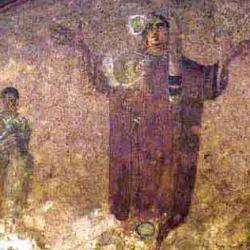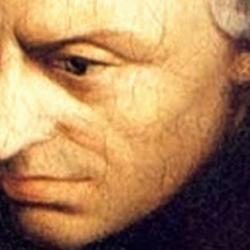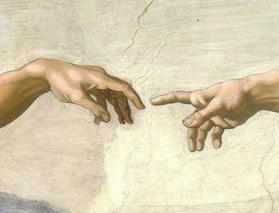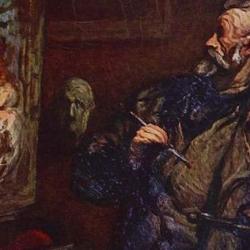In Hand to Hand, a meditation on “listening to the work of art,” Jean-Louis Chretien traces the origins of the notion of God as artist and the artist as created. “How did the creative act, which for biblical Revelation properly belongs only to God, come to be thought of thanks to schemas borrowed from the properly human act of production and of fabrication?” Answering this question means following out a double transfer, of “a human model . . . transferred to God, and a divine model to man.”
Our notions of artistic creativity are of Christian origin. Though the basic terms by which art is discussed in Western philosophy come from the Greeks, they lacked the biblical notion of creation, and “could not in any way compare the activity of the artist to that of God calling things into being solely through his speech.”
Chretien thinks that Heidegger is correct to trace “the basic concepts of philosophy” to the interpretation of the reality of production, of tekne and poiesis. For the Greeks, something could be artistic only if it could be taught, and this implied that the art surpasses the person who puts it to work. Art “cannot go wrong,” though the artist might, “by departing from its rules or by applying them incorrectly.”
For the Greeks, production is necessarily transitive, coming to its completion not in the artist but in the thing made. For Thomas Aquinas too, assessment of art is assessment of the artifact, not of the artist. It is not necessary that the artist act well “but that his work be good,” Thomas argued: “it [is] necessary for the thing to act well, for example that a knife should cut well” (emphasis added). Chretien cleverly notes that Thomas’s well-made knife “cuts at the root of every cult of the artist,” who was always considered identical to the craftsman. Both are simply workers, who “do work” and work and produce works: “to think about art and to think about the doing of art were rigorously identical.”
Christians who talked about God as supreme artist not only introduced a new concept of God and art, but overturned “the relations that ancient philosophy had established between nature and art. Instead of being first, nature will become secondary with regard to art, the world being in its entirety a work of divine art. Even the natural will become artificial in its essence.”
There are some anticipations of this in ancient philosophy. Plato suggests in Book 10 of the Laws that the soul is the supreme ruler of the body, and so the soul of the world is “an organizer of the world,” so that there is a “primacy of tekhne, of art over nature.” As Plato puts it, “nature herself—to use the mistaken terminology of our opponents—is posterior and must result, as a subordinate thing, from art and from intelligence.” As the argument continues, though, it becomes clear that the soul itself is natural, and so the primacy of “art” over nature is really “the primacy of the proper and true meaning of nature over a derived and improper meaning.”
Cicero’s summary of Zeno’s theory of the artist fire points in a similar direction. The process of art done by the hand is done far more skillfully by nature, which is defined in terms of “that artist fire which is the master of the other arts.” In Zeno’s view, “Master of all the arts, the artist fire, the pure tekhnikon, is at once both the supreme art and the supreme artist: it is immanent in its work, it dwells within it.”
According to Chretien, the notion of a divine artist and of the world as art comes into its own in Augustine’s Trinitarian notion of ars divina, as it was developed in medieval theology and Baroque art theory. I will summarize Chretien’s account in a future blog post.











